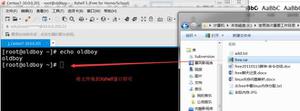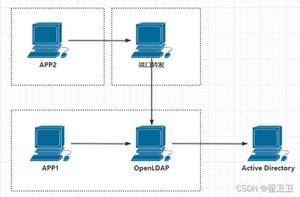python模块学习textwrap文本包装和填充
![python模块学习- textwrap 文本包装和填充[python基础教程]](/wp-content/uploads/new2022/20220602jjjkkk2/5638213905_1.jpg)
python模块学习- textwrap 文本包装和填充
代码实例:
sample_text = '''
The textwrap module can beused to format text for output in
situations wherepretty-printing is desired. It offers
programmatic functionalitysimilar to the paragraph wrapping
or filling features found inmany text editors.
'''
段落填充:
import textwrapfrom textwrap_exampleimport sample_text
print "Nodedent:
"
printtextwrap.fill(sample_text, width=50)
执行结果:
# pythontextwrap_fill.py
No dedent:
The textwrap module can be used to format
text for outputin situations where pretty-
printing is desired. It offers programmatic
functionalitysimilar to the paragraph wrapping
or fillingfeatures found in many text editors.
结果为左对齐,第一行有缩进。行中的空格继续保留。
移除缩进:
import textwrapfromtextwrap_example import sample_text
dedented_text = textwrap.dedent(sample_text)
print "Dedented:"
printdedented_text
执行结果:
# pythontextwrap_dedent.py
Dedented:
The textwrapmodule can be used to format text for output in
situations wherepretty-printing is desired. It offers
programmaticfunctionality similar to the paragraph wrapping
or fillingfeatures found in many text editors.
这样第一行就不会缩进。
结合移除缩进和填充:
import textwrapfromtextwrap_example import sample_text
dedented_text =textwrap.dedent(sample_text).strip()
for width in [ 45,70 ]:
print "%d Columns:
" % width
print textwrap.fill(dedented_text,width=width)
执行结果:
# pythontextwrap_fill_width.py
45 Columns:
The textwrapmodule can be used to format
text for output insituations where pretty-
printing isdesired. It offers programmatic
functionalitysimilar to the paragraph
wrapping orfilling features found in many
text editors.
70 Columns:
The textwrapmodule can be used to format text for output in
situations wherepretty-printing is desired. It offersprogrammatic
functionality similarto the paragraph wrapping or filling features
found in many texteditors.
悬挂缩进:悬挂缩进第一行的缩进小于其他行的缩进。
import textwrapfromtextwrap_example import sample_text
dedented_text =textwrap.dedent(sample_text).strip()
printtextwrap.fill(dedented_text,
initial_indent="",
subsequent_indent=" " * 4,
width=50,
)
执行结果:
# pythontextwrap_hanging_indent.py
The textwrapmodule can be used to format text for
output in situations where pretty-printingis
desired. It offers programmatic functionality
similar to the paragraph wrapping orfilling
features found in many text editors.
其中的’’*4还可以使用其他字符代替。
TextWrap提供函数wrap()和fill(), 以及TextWrapper类,工具函数dedent(). 通常包装或者填充一两个字符串使用wrap()和fill()。其他情况使用TextWrapper更高效。
textwrap.wrap(text[,width[, ...]])
包装单个段落(text为输入,系字符串),每行最长宽度width。返回输出行的列表,最后行无换行符。Width默认70。
textwrap.fill(text[,width[, ...]])
包装单段文字,并返回包含包裹段落的字符串。实际上是"
".join(wrap(text,...))的缩写。wrap() and fill()创建TextWrapper实例,并调用一个方法。这些实例不被重用,所以包装/填充很多文本字符串要构造自己的TextWrapper对象更有效。TextWrapper.break_long_words设置是否拆长单词。
textwrap.dedent(text)
反缩进去除每行行首的空白。这方便显示三引号中的内容而不修改其源代码中的缩进。
以上是 python模块学习textwrap文本包装和填充 的全部内容, 来源链接: utcz.com/z/537392.html







